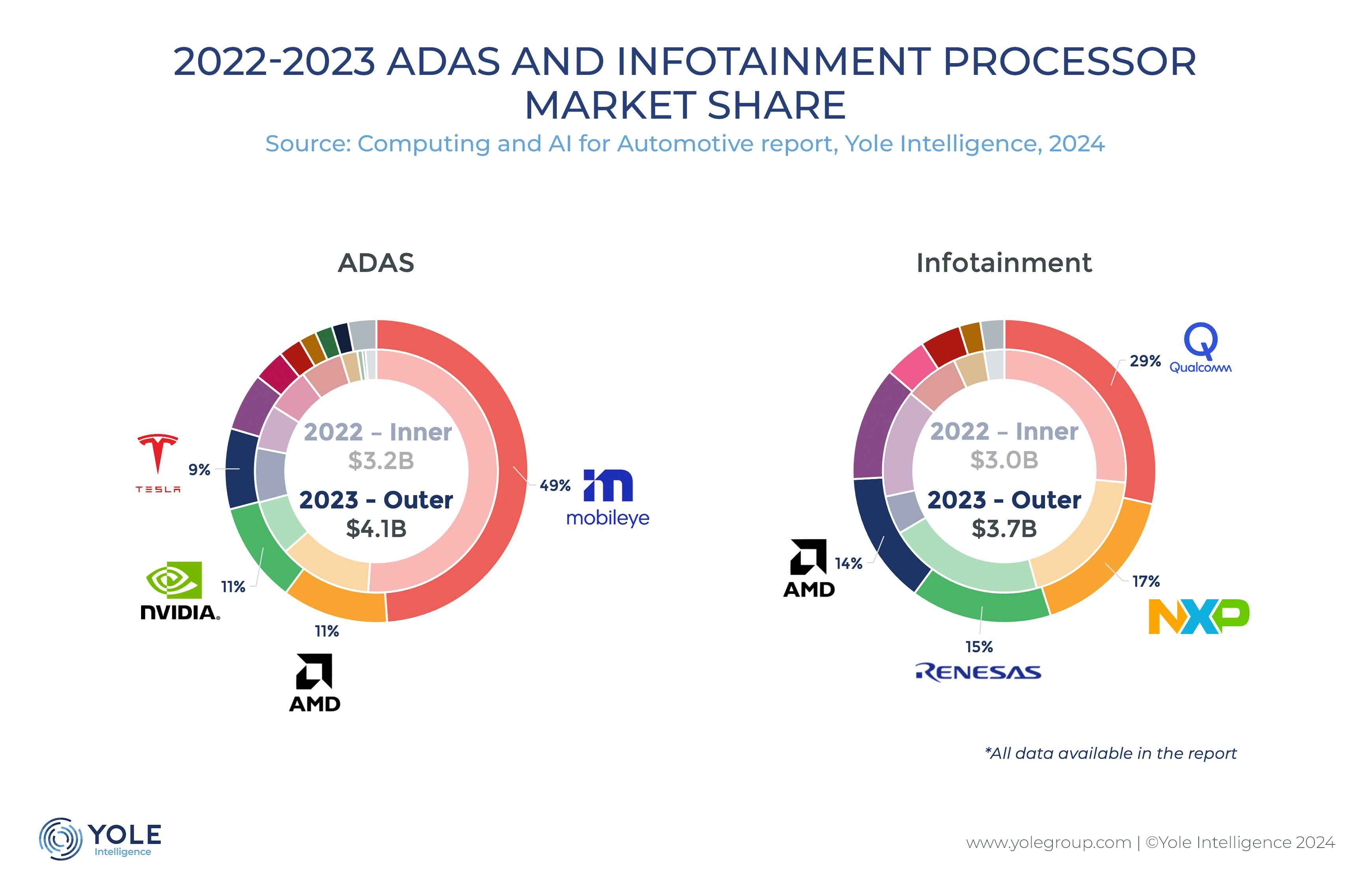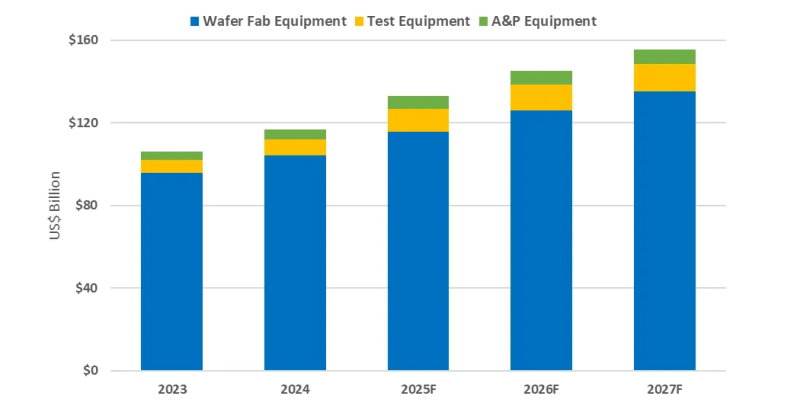The automotive processor market generated $20 billion in revenues last year with $7.8 billion from APUs (Application Processing Units) and FPGAs, and$12.2 billion from MCUs, according to Yole Group.
APU and FPGA processors were divided between ADAS with $4.1 billion, and cockpit applications with $3.7 billion.
ADAS and active safety applications are projected to grow robustly, while infotainment and telematics applications are expected to grow at a CAGR of 8% to $5.9 billion by 2029.
The market for ADAS sensing, including imaging processors for front-facing cameras, radar APUs, and LiDAR processors is expected, at a 7% CAGR23-29.
Central computing within vehicles is projected to experience a surge with a 36% CAGR23-29, propelled by the increasing integration of ADAS domain controllers.
Additionally, in-cabin sensing technologies, focused on monitoring driver and occupant behavior, are set to grow rapidly, reflecting a shift toward enhanced in-vehicle safety and user experience.
“In the infotainment and telematics segment, the primary in-vehicle infotainment unit is projected to grow steadily, with telematic processors expected to see substantial growth, particularly with the rollout of 5G technology,” says Yole’s Adrien Sanchez, “this points to a future where connected and intelligent vehicles become increasingly commonplace, driven by the continuous evolution of automotive processor technologies.”


AD central processors are anticipated to grow from $826 million in 2023 to $4.4 billion by 2029 at a 32% CAGR. VPUs (Vision Processing Units), APUs, and FPGAs are expected to grow with CAGRs of 4%, 53%, and 20%, respectively.
The Computing and AI for Automotive report from Yole Group provides an overview of computing for safety, ADAS and AD, in-cabin sensing, cockpit, and connectivity applications.
This report provides a potential scenario for AI evolution within the dynamics of the autonomous automotive market and presents an understanding of the impact of AI on the semiconductor industry.
The growing importance of processors in the automotive industry, coupled with the complexity of these systems, has prompted OEMs to become more involved in processor development.
OEMs now collaborate directly with semiconductor manufacturers to create processors tailored to their specific needs.
In 2023, Western companies accounted for over 95% of automotive ADAS and infotainment processor revenues. However, they are facing increasing competition from Chinese companies.
“Horizon Robotics and HiSilicon (a subsidiary of Huawei) are making significant strides in the central processor market,” says Yole’s Hugo Antoine, “for example, Horizon Robotics’ automotive revenues increased by 57% between 2022 and 2023. Although this growth is mainly concentrated in the Chinese market, Western companies are investing heavily to establish a presence in China. Currently, Tesla is the only company to have successfully developed its own central processors, but the Chinese car manufacturer Nio has started designing its own, capable of combining the power of four Nvidia Orin processors into a single SoC. ”
In the infotainment sector, Chinese companies such as Rockchip, Unisoc, BlackSesame, SemiDrive, and SiEngine are growing, though their adoption remains limited. The Chinese market is still largely dominated by Qualcomm
Stay up to date with the latest in industry offers by subscribing us. Our newsletter is your key to receiving expert tips.

Powered by AI demand and booming memory sales, the semiconductor industry surpassed records with $216.3 billion Q3 revenue, races toward $800 billion in 2025, as growth broadens.Global semiconductor r

Worldwide semiconductor equipment sales are projected to grow 13.7 percent in 2025, reaching a record 133 billion dollars, Semi announced at Semicon Japan. This momentum is expected to continue throug

The smartphone industry is facing considerable cost challenges in 2026 amid ongoing memory supply shortages and rising prices. This situation is expected to lead to a 1.6% decrease in annual shipments